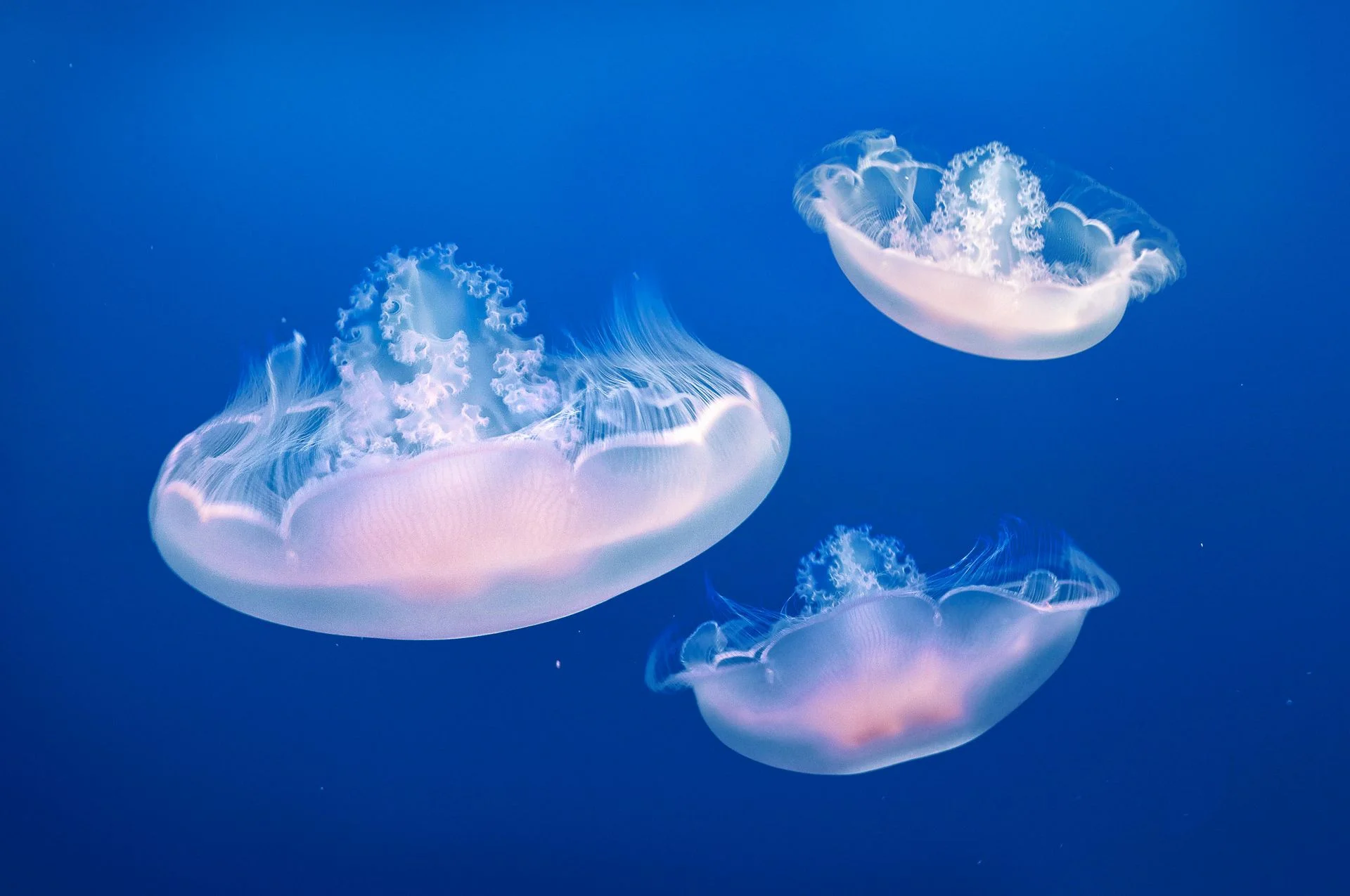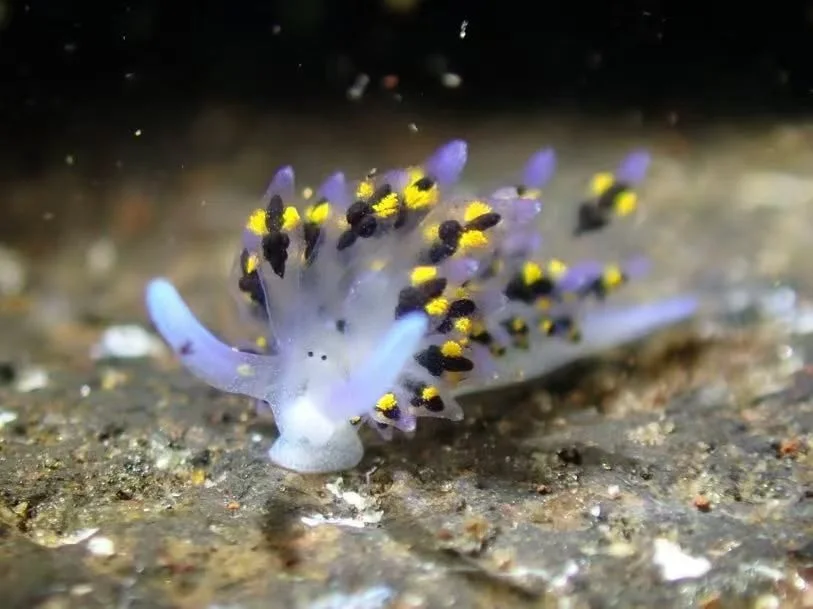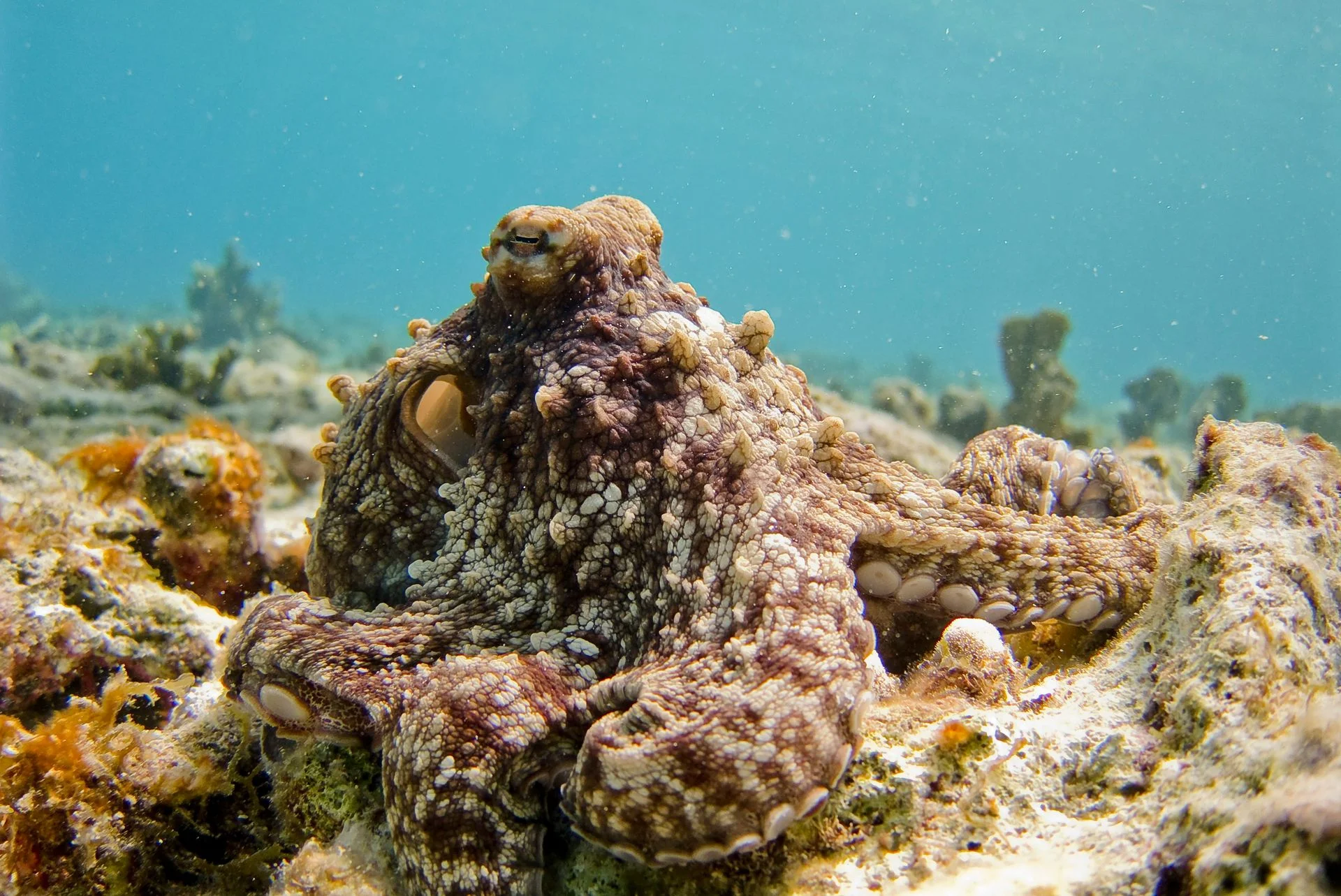Marine Creatures Guide
Explore the fascinating world of marine life. Learn to identify species, discover amazing facts, and get expert tips for diving observations.

Boxfish
Family Ostraciidae
Boxfishes (family Ostraciidae) are slow, charismatic reef fishes wrapped in a rigid, box-shaped carapace built from interlocking hexagonal plates. They steer with tiny pectoral, dorsal and anal fins—an efficient “hover mode” called ostraciiform swimming—while their little puckered mouths peck at worms, crustaceans and sponges. Striking patterns and the famous yellow polka-dot juveniles make them crowd favorites, but they’re best admired gently: some species can release a detergent-like skin toxin if severely stressed.

Cuttlefish
Sepiida
Cuttlefish are cephalopods in the order Sepiida, renowned for instantaneous camouflage, expressive signaling, and agile jet propulsion. Unlike octopuses, they have a porous internal shell called the cuttlebone that regulates buoyancy. With W-shaped pupils, eight arms plus two shootable feeding tentacles, and sophisticated vision (including polarization sensitivity), cuttlefish are versatile reef and sand-flat predators that hunt crustaceans and fishes.

Frogfish
Antennariidae
Frogfishes are ambush predators in the anglerfish order (Lophiiformes), famed for extreme camouflage and lightning-fast strikes. They use a modified dorsal spine called the illicium tipped with a lure (esca) to attract prey, then engulf it with a powerful suction strike. With limb-like pectoral and pelvic fins, frogfish can “walk” along the seafloor and blend seamlessly into sponges, algae, or rubble.

Ghost Pipefish
Solenostomidae (e.g., Solenostomus paradoxus)
Ghost pipefishes (family Solenostomidae) are delicate syngnathiform fishes related to seahorses and pipefishes but in their own family. They excel at mimicry—matching feather stars, algae, or hydroids—and often hang nearly motionless with heads slightly down. Females develop a distinctive brood pouch by fusing their enlarged pelvic fins, where fertilized eggs are incubated until hatching.

Jellyfish
Scyphozoa
Jellyfish are fascinating marine invertebrates belonging to the sub-phylum Medusozoa of the phylum Cnidaria. Despite their common name, they are not fish—they lack backbones, fins, and the typical anatomy of fishes.

Nudibranch
Nudibranchia
Nudibranchs, often called “sea slugs,” are among the most visually striking invertebrates in the ocean. Belonging to the subclass Opisthobranchia of the class Gastropoda, they are shell-less mollusks known for their vibrant colors and delicate forms. Their name “nudibranch” literally means “naked gills,” referring to the exposed feathery structures on their back used for respiration.

Octopus
Octopoda
Octopuses are soft-bodied cephalopods famed for intelligence, dexterous arms, and exceptional camouflage. They possess eight arms lined with powerful suckers, a parrot-like beak, three hearts, and copper-based blue blood (hemocyanin). Lacking an internal or external shell, they squeeze through tiny gaps, eject ink to confuse predators, and use a jet of water from the siphon for rapid escape.

Pipefish
Family Syngnathidae (e.g., Corythoichthys, Doryrhamphus, Dunckerocampus)
Pipefishes are seahorse relatives stretched into elegant living needles. They swim horizontally using rapid dorsal fin flicks and micro-adjust with tiny pectorals, hunting by vacuuming copepods and shrimp with a lightning suction snap of their long tubular snout. Like seahorses, males carry the eggs—from sticky belly patches to fully formed pouches— while many species sport striking bars or dots that make them underwater candy canes.

Seahorse
Hippocampus (Family Syngnathidae)
Seahorses are upright, slow-swimming syngnathiform fishes whose heads resemble a horse’s profile. They anchor with a prehensile tail, inhale prey with a snap of their long tubular snout, and wear interlocking bony plates instead of scales. Uniquely among fishes, males become pregnant: the female deposits eggs into the male’s brood pouch, where embryos develop until live birth.